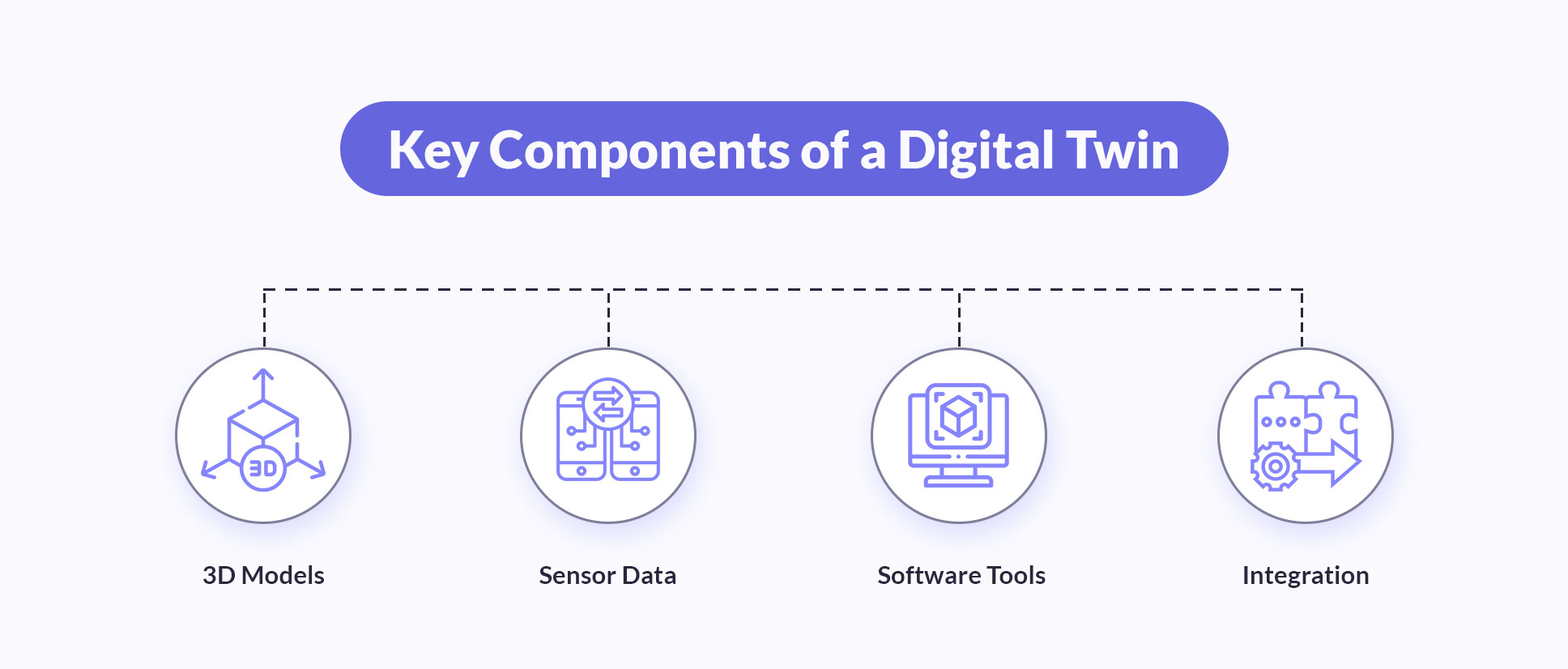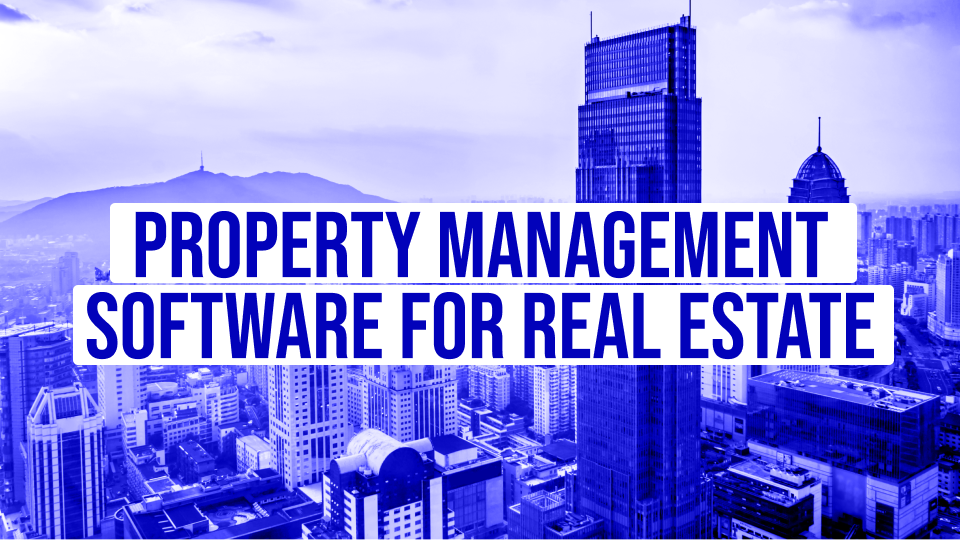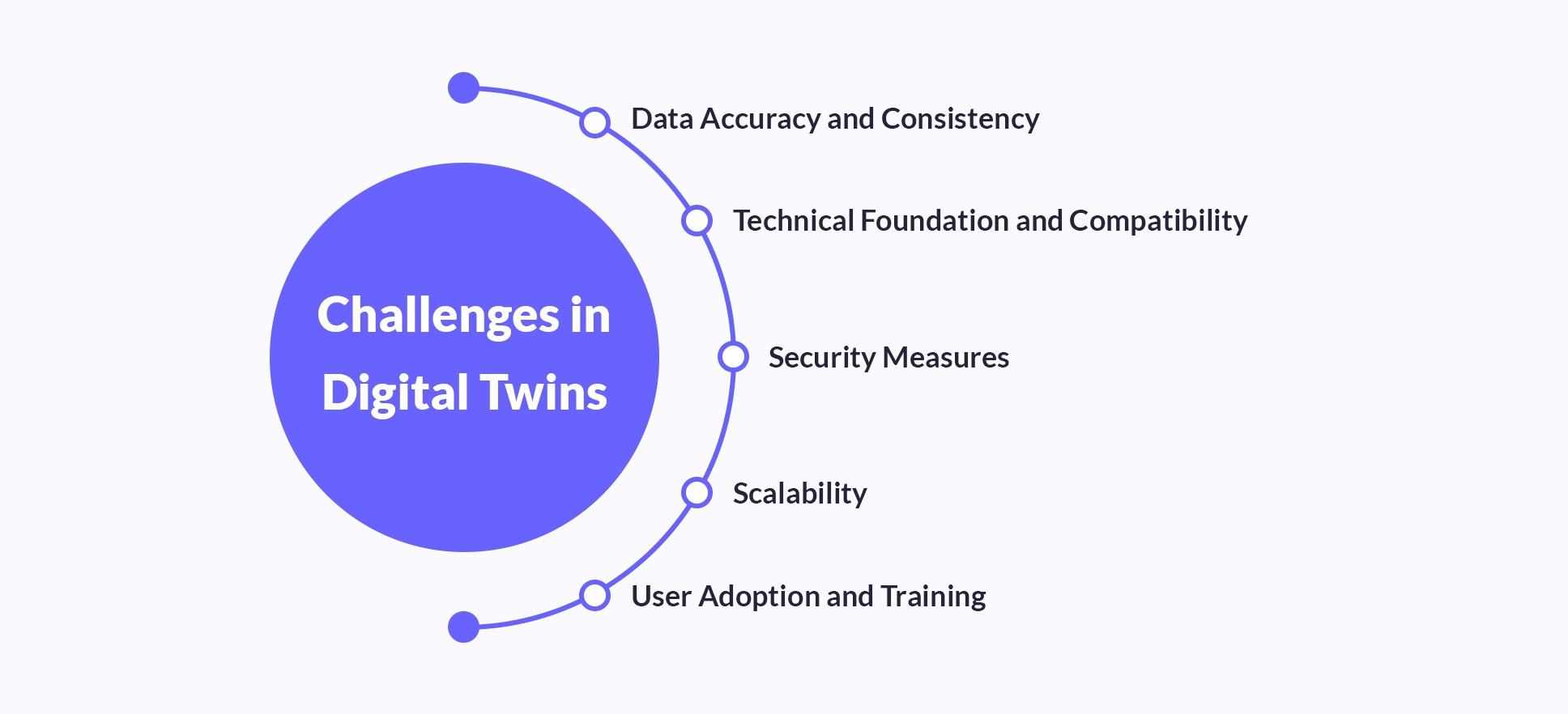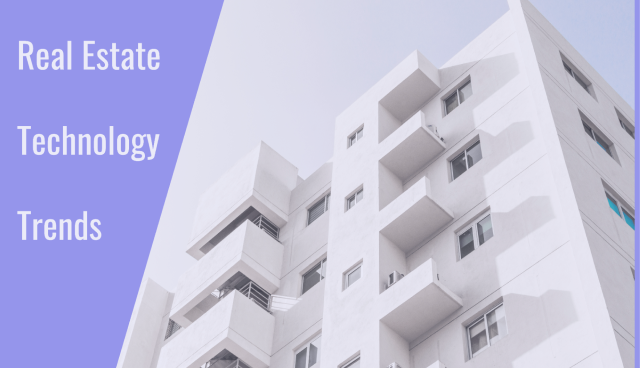- What Is a Digital Twin and How Can It Help With Rental Property Management?
- How to Build a Digital Twin: Step-by-Step Process
- Benefits of Digital Twins For Rental Property Management
- Addressing Challenges in Digital Twins for Rental Property Management
- What Is the Future of Digital Twins?
- Geniusee's Role in Real Estate Software Development Services
- Wrapping Up
Digital Twins have revolutionized the way we manage and optimize physical assets. With the power of Digital Twins, it is easy to enable real-time monitoring, predictive maintenance, and enhanced decision-making, all virtually.
With its flexibility to replicate and maintain continuous synchronization with a physical environment, it has been adopted by many industries, including property management.
A recent report from Grand View Research further emphasizes this sentiment, “The global digital twin market size was estimated at USD 11.13 billion in 2022 and is projected to grow at a compound annual growth rate (CAGR) of 37.5% from 2023 to 2030.”
While this is reliable, it has become difficult to put it into optimal application. Let's address this by learning innovative and cost-effective strategies on how to create a digital twin in rental property management.
In This Article:
What is a Digital Twin and How Can It Help with Rental Property Management
While we learned what a Digital Twin is, recognizing its significance for smart buildings becomes crucial with rental property management.
A digital twin of a building is a digital replica of the physical space and its characteristics. It encompasses all aspects of the building, from its design and structure to its operation and maintenance.
With each building status represented in real time, it allows rental property firms and stakeholders to monitor, analyze, and optimize building operations. As a result, rental properties are consistently improving while reducing costs and enhancing tenant experiences.
Understanding the Key Components of a Digital Twin in Rental Property Management

Usually, to build digital twins for any physical object requires a lot of components. Considering the complexity of a digital twin in rental property management, many factors may arise.
Below, we delve into the fundamental components that constitute a comprehensive digital twin of a building.
3D Models — Typically, building information modeling (BIM) or other existing software models are considered and converted to 3D models. It has many use cases and can help generate a detailed and accurate virtual replica of the building's physical characteristics.
Sensor Data — The implementation of sensor tools is why many are utilizing digital twins. Digital twinning for a building is distributed with sensors and IoT devices, providing up-to-date information on various aspects.
Software Tools — While the sensors are placed, they must be controlled and maintained, which is achieved through software tools. These tools analyze the sensor data and integrate it with the 3D model.
Integration — When everything is implemented, robust network connections are required. This ensures seamless data flow between the physical twin and its virtual twin.

More on the topic
How To Develop Property Management Software For Real Estate
Learn the ins and outs of creating property management software for real estate.
Read onHow to Build a Digital Twin: Step-by-Step Process
The need for creating a digital twin has become important for industries looking to enhance their operational efficiency. While each industry follows different approaches to building a digital twin, we have included the below steps specifically for those in rental property management to learn how to build a digital twin.
Building a 3D Viewer App with Nuxt.js and Xeokit SDK
Start by installing Node.js and Nuxt.js on your computer to establish your development environment.
Next, use the command line to initiate a new Nuxt.js project and a base for the 3D viewer application.
Once done, proceed to download and add the Xeokit SDK to your Nuxt.js project to enable the necessary 3D rendering capabilities.
Finally, utilize Nuxt.js and Xeokit SDK to build an intuitive and user-friendly interface for your 3D viewer app.
Converting 3D Models from IFC to XKT
Begin with selecting a tool or software capable of converting IFC files to the XKT format.
Next, load your 3D building model in IFC format into the chosen conversion tool.
Now, transform the IFC model into the XKT format, ensuring compatibility with your 3D viewer app.
Finally, confirm that all elements of the building model have been accurately converted and are visible in the XKT format.
Data Processing and Storage
Start by creating a server using Node.js and Express to manage data processing and communication.
Next, connect InfluxDB with your server to store time-series data from sensors and IoT devices.
Then, parse an IFC file with the IfcOpenShell tool to create the network of building elements for the Neo4j database. The output is presented in the JSON structure.
Now, use Neo4j to manage data involving complex relationships, such as connections between different building components. You can also attach sensor data to nodes and render a list of spaces (rooms) with data values on the front end.
Finally, develop scripts or functions on your server to process incoming data and store it in the appropriate databases.
Connecting Real-Time Data Sources to Your Digital Twin
Begin by determining the types of sensors and use cases required for your digital twin and installing them in the physical building.
Ensure all sensors are network-connected, enabling data transmission to your server.
Next, configure both sensors and servers to ensure secure and efficient data transmission.
Finally, enhance your 3D viewer app to receive and display real-time data from the sensors, establishing a complete connection between the physical building and its digital twin.
Note: The above steps can be referred to for digital twin development and other physical elements. Ensure you make necessary adjustments by using different tools and software to suit your unique context and objectives when creating digital twins.
Benefits of Digital Twins for Rental Property Management

Digital Twins are packed with benefits, and while we couldn't list everything, here are some of the crucial benefits that can be realized for rental property management.
Enhanced property management. Advanced digital twin technology and machine learning algorithms have greatly impacted rental property management thanks to its real-time asset management and quick response capabilities. The impressive growth of the Digital Twin market at a CAGR of 58% from 2021 to 2026 speaks for everything.
Optimized space utilization. With almost every component represented in real time, the impressive virtual representations of the models can be analyzed when needed and used to utilize property space effectively.
Data-driven decision making. Many are adapting to digital twins because of their ability to provide valuable insights through data analysis. This has made it easy for many property managers to make informed decisions, and the impressive market growth from $8 billion in 2022 to an expected $90 billion by 2032 sums up its prominence.
Energy efficiency. As the Digital Twin market grows, its contribution to energy efficiency becomes more apparent. It monitors energy consumption and provides data-driven strategies to reduce energy use, contributing to cost savings and environmental conservation.


Thank you for Subscription!
Remote property tours. Keeping aside the stats, in reality, rental property firms can utilize digital twins by offering potential tenants virtual tours. This new representation expands the reach to a global audience and saves time for both parties.
Predictive maintenance. By anticipating and addressing maintenance needs promptly, it ensures the longevity of assets and reduces maintenance costs for rental property firms. Such swift issue resolution enhances the tenant experience for optimal facility conditions.
Sustainability. The Digital Twin market for rental property management goes beyond personal use and is used for sustainability. With a perfectly implemented digital twin, resource utilization and waste reduction can be optimized while supporting the creation of green and sustainable properties.
Addressing Challenges in Digital Twins for Rental Property Management

While the benefits might seem appealing if you're trying to create a digital twin for rental property management, it is important to address the challenges below before using it.
Data accuracy and consistency. Considering digital twins are focused on data accuracy, maintaining consistency can be challenging while trying to reflect the current state of the property accurately. Hence, even minor discrepancies must be eliminated to avoid severe financial losses.
Technical foundation and compatibility. For integrating digital twins with existing property management systems, utmost care must be taken by implementing a strong technical infrastructure. Also, various software applications need to be well-configured and compatible for seamless operation and data exchange.
Security measures. Typically, rental properties contain sensitive information, and virtual objects continuously store and process it, which puts the data at risk. Hence, to eliminate undesirable events caused by unauthorized access and data breaches, robust security measures need to be implemented.
Scalability. As rental property portfolios expand, the digital twin’s features and its system must be able to scale accordingly. This requires a flexible and adaptable infrastructure that can meet the growing demands of the industry.
User adoption and training. While the concept of digital twins might sound simple, the implementation is loaded with complex steps, and unfortunately, it can be difficult to utilize. Hence, effective training and user adoption strategies must be provided to property managers, staff, and stakeholders to get comfortable and proficient in using the new technology.

Some insights for you
Top 10 Real Estate Technology Trends In 2022–2025
Explore the future of real estate technology through this article.
Continue readingWhat is the Future of Digital Twins
With the stats mentioned so far, it is evident that digital twins are not just tools but vital companions driving innovation, efficiency, and sustainability.
While new approaches and simulation softwares might be introduced that could be arguably better or replace digital twins, here are our insights on the future digital twins might hold in rental property management:
Expect smoother incorporation of digital twins in property management systems, enhancing user experience and operational efficiency.
Future digital twins will provide even more precise and timely data, ensuring property managers have the information they need at any time.
Digital Twins will become more accessible, with intuitive designs that make navigation and usage straightforward.
Welcome smarter digital models equipped with advanced analytics to offer insightful recommendations and trend predictions.
The future will see Digital Twins at the forefront of creating energy-efficient, green buildings, contributing to a more sustainable future.
Expect autonomous and intelligent digital twins capable of optimizing building operations without human intervention.
Geniusee's Role in Real Estate Software Development Services
At Geniusee, we specialize in real estate software development services by offering a comprehensive suite of real estate software solutions. This includes tools for property management, ERP, and process automation services, as well as innovative applications like digital twins.
Our team ensures a seamless workflow, whether we are creating a new application or updating an existing one, always choosing the right technology stack for optimal performance.
By partnering with us, you gain access to cutting-edge solutions that empower you to make data-driven decisions, optimize operational efficiency, and stay ahead in the competitive real estate market.
Take a look at our cases
Shining a spotlight on client success, where each story is a testament to partnership and achievement.
Wrapping Up
In conclusion, implementing digital twins in rental property management is a transformative move towards efficiency, sustainability, and enhanced tenant experiences.
Considering everything we provided on how to build a digital twin, it is evident why many industries are adapting it. While the future looks bright with digital twins, it's crucial to address the challenges associated with its implementation.
If you're worried about unforeseen circumstances, Geniusee can be your reliable partner, offering comprehensive real estate software development services and innovative solutions curated specifically for the real estate sector.


















